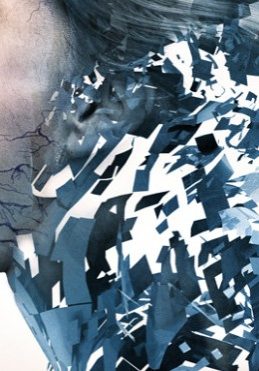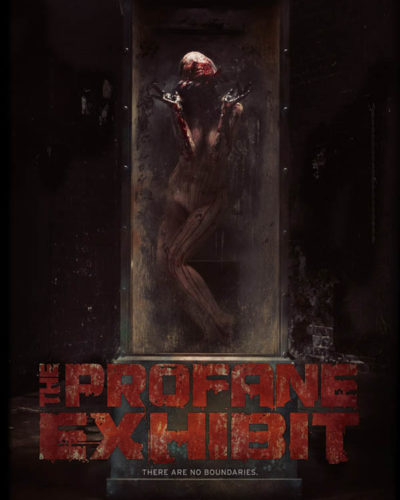Isolation and Fear: The Core of Antisocial 2
“Do you ever think about how you’re going to die?” This haunting line echoes throughout “Antisocial 2,” directed by Cody Calahan and released in 2015. The film immerses viewers into a dystopian world where a lethal virus spreads through social media, forcing a group of survivors to confront not only their imminent mortality but also the terrifying realities of human nature. As the sequel to “Antisocial,” this film explores the implications of technology on personal relationships and societal behavior, blending horror with social commentary in a chilling tableau.
Crafting a Sense of Dread
“Antisocial 2” establishes a palpable atmosphere of horror right from the opening scene. The film adeptly employs suspense and a looming sense of foreboding to weave a spell of anxiety around its characters and viewers alike. The initial calm is shattered by sporadic outbreaks of violence and illness as a contagion spreads, highlighting the unpredictability of life during crises. The film’s pacing utilizes silence followed by sudden eruptions of terror, making each moment fraught with tension.
The director, Cody Calahan, excels at orchestrating fear through a gradual build-up, allowing viewers to invest emotionally in the characters before unleashing the horror. He masterfully utilizes dark, claustrophobic settings to conjure feelings of entrapment and vulnerability. This approach heightens the viewer’s awareness of their surroundings, misdirecting expectations only to deliver shocking moments that linger in the mind long after viewing.
Visual Language: The Role of Cinematography
Visually, “Antisocial 2” is an experience steeped in shadows and muted colors. The cinematography employs a subdued palette that not only reflects the bleak atmosphere but also enhances the overall horror. The use of tight camera angles creates intimacy during moments of despair while evoking paranoia and distance during the chaotic scenes. Lighting plays a crucial role; dimly lit spaces become breeding grounds for fear, where unseen dangers lie lurking in the corners.
The film breaks away from traditional horror aesthetics by incorporating unique visual styles, particularly during manic episodes of violence. Quick cuts and blurred motion convey chaos and disorientation, drawing parallels to the disarray infecting both the characters and the world they inhabit. The specific use of practical effects over digital ones further grounds each horror moment, ensuring they resonate with a visceral realism that is often lost in contemporary horror.
The Soundtrack: An Auditory Nightmare
The soundtrack of “Antisocial 2” is instrumental in shaping the tense atmosphere, with a mix of ambient sounds, haunting melodies, and jarring effects that amplify the horror experience. The film presents a keen ear for sound, with silence employed as a potent weapon—allowing the viewer to feel the weight of terror before startling them with abrupt auditory shocks. These crafted sounds underscore feelings of isolation and desperation, enhancing themes of alienation instilled by social media.
There are moments in the film where the absence of sound is as impactful as its presence. The eerie quietness before a sudden outburst creates an unsettling tension, making viewers hyper-aware of every creak and breath. It challenges the audience’s senses and expectations, immersing them deeper into both the psychological and physical horrors the characters face.
Character Depth: A Struggle for Survival
The performances in “Antisocial 2” deserve commendation for their authenticity. The actors delve deeply into their roles, offering believable portrayals of individuals thrust into a nightmare. The characters each bring their own fears and motivations, providing a rich tapestry of backstories that inform their reactions to the terror surrounding them. This depth of characterization makes their struggles more relatable and engaging for the audience.
However, while some characters evolve in response to their circumstances, others fall into predictable tropes common in horror films. While these tropes serve an immediate narrative purpose, their over-reliance can diminish the impact of the later horror, making certain scenarios feel contrived. Still, the interplay among the characters accentuates the film’s emotional impact as they grapple with fear, loyalty, and betrayal.
Horrific Elements: Beyond the Surfaces
“Antisocial 2” primarily subscribes to psychological horror while threading in notions of body horror, as characters confront both an external virus and an internal, buried fear of social breakdown. The horror portrayed is multifaceted, addressing the dread of a contagious illness alongside the dark implications of digital interplay within society. It challenges the viewer to consider their relationship with technology, raising questions about isolation in our connected world.
This fusion of traditional horror elements with modern anxieties results in a chilling critique of contemporary society and its preoccupation with online personas. The film shines in its ability to provoke thought, using fear as a lens to examine human behavior in the face of societal collapse.
Methods of Fear: A Blend of Techniques
The methods used to instill fear in “Antisocial 2” vary from psychological manipulation to sudden jumpscares. The film’s reliance on psychological horror strikes a chord with audiences familiar with the fear of the unknown, while strategic gore and sudden shocks provide visceral jolts that keep viewers on edge throughout. This blend of techniques allows the film to serve both as a mental challenge and a sensational thrill ride.
What becomes especially effective is the film’s ability to unsettle through the mundane—common social interactions turned ominous due to the overarching fear. Every text message, social media update, and face-to-face conversation is loaded with potential threat, making the audience question every interaction.
Societal Reflections: Commentary on Modern Life
One of the most significant strengths of “Antisocial 2” lies in its ability to utilize the horror genre as a medium for social commentary. Through its exploration of how social media distorts human connections, the film prompts viewers to think critically about their relationships with technology. The viral threat symbolizes the infectious nature of fear within our hyper-connected world, challenging the viewer to examine the consequences of their online behaviors.
The film addresses deeper issues of mental health, loneliness, and the hollowness of online interactions, making it not merely a horror film but an allegory for existential dread in the modern age. This thematic resonance elevates its horror elements, making an impression that lingers beyond viewing.
Final Thoughts on Terror
In assessing “Antisocial 2,” it is clear that the film is a compelling addition to the horror genre. It effectively combines psychological horror with social commentary to create an engaging and thought-provoking experience. Its ability to be genuinely frightening through a mix of terror techniques leaves viewers unnerved while inviting deeper reflection on contemporary issues.
This film is particularly suited for horror aficionados who appreciate a narrative interwoven with thematic depth. Additionally, those interested in the influence of technology on personal relationships will find this exploration relevant and insightful.
While it may not resonate with casual viewers looking for straightforward scares or less cerebral content, “Antisocial 2” efficiently fills the niche of horror that provokes thought alongside fear. With graphic content that might trouble sensitive viewers, a cautionary note is warranted for those who might find the themes of violence and social decay distressing.
Overall, “Antisocial 2” stands out for its inventive approach to horror, and though not flawless in execution, its distinctive vision redeems any shortcomings in character treatment. It presents a convincing narrative that establishes itself as more than mere entertainment, making it a worthy exploration for anyone interested in the darker sides of human existence in the digital age.




